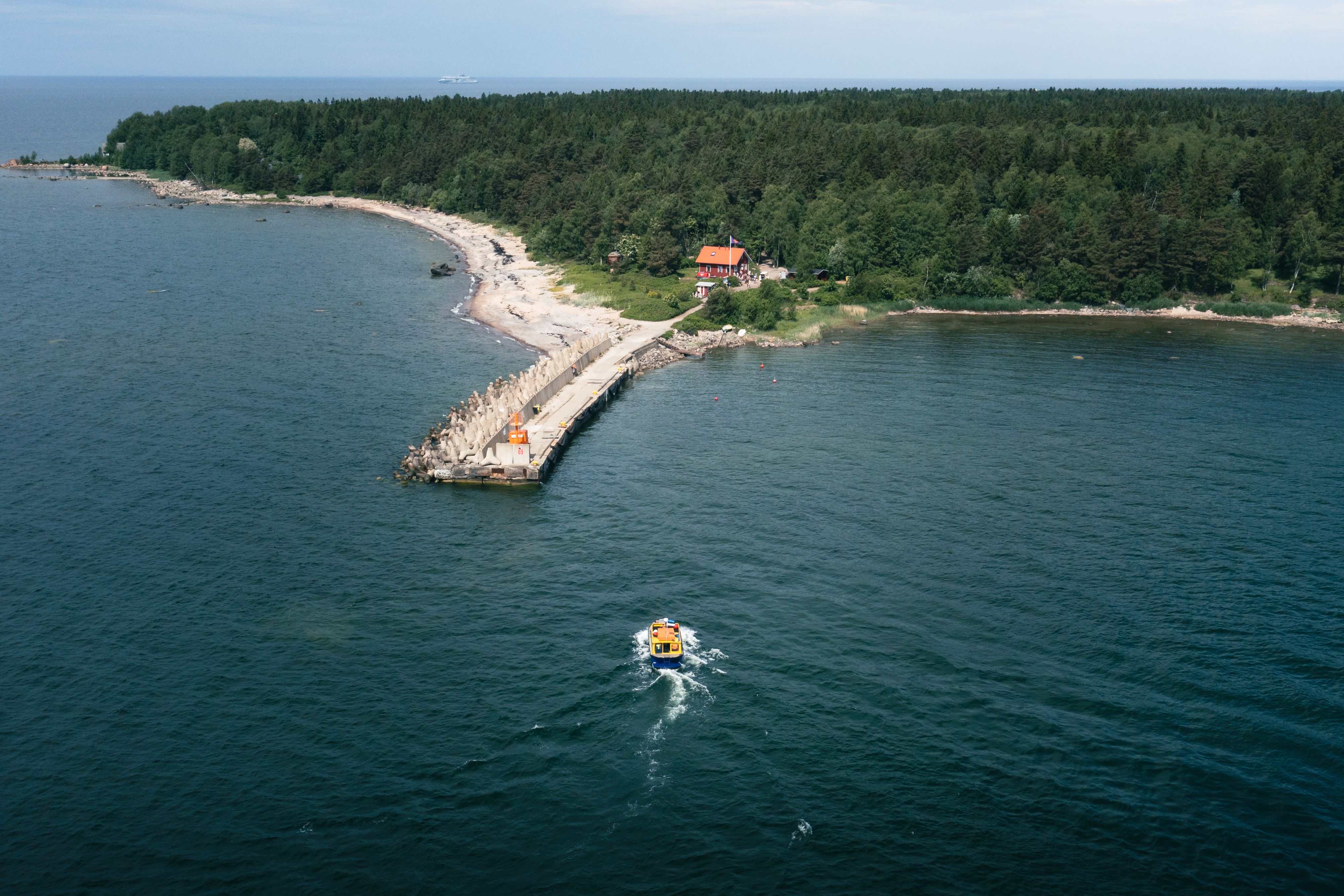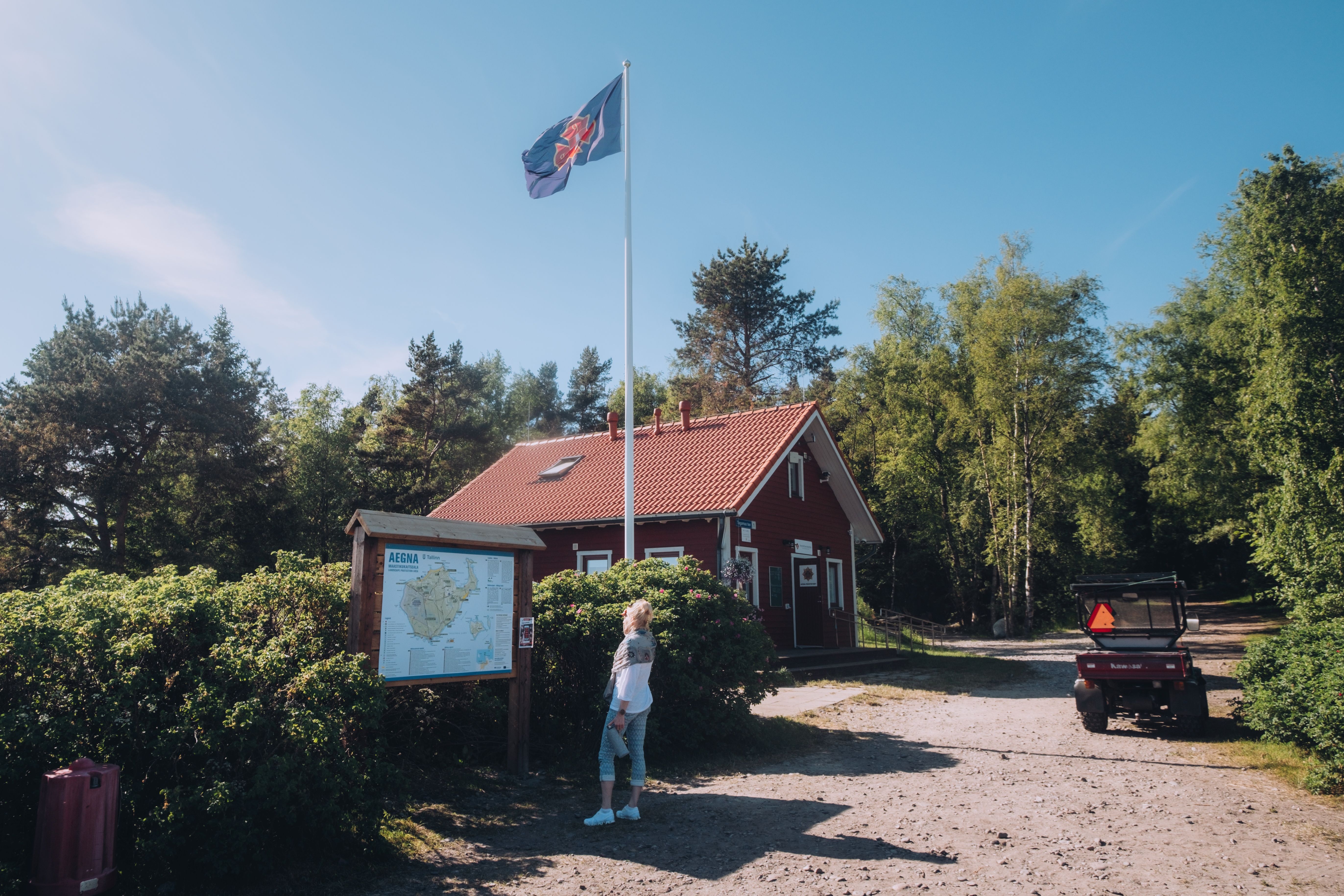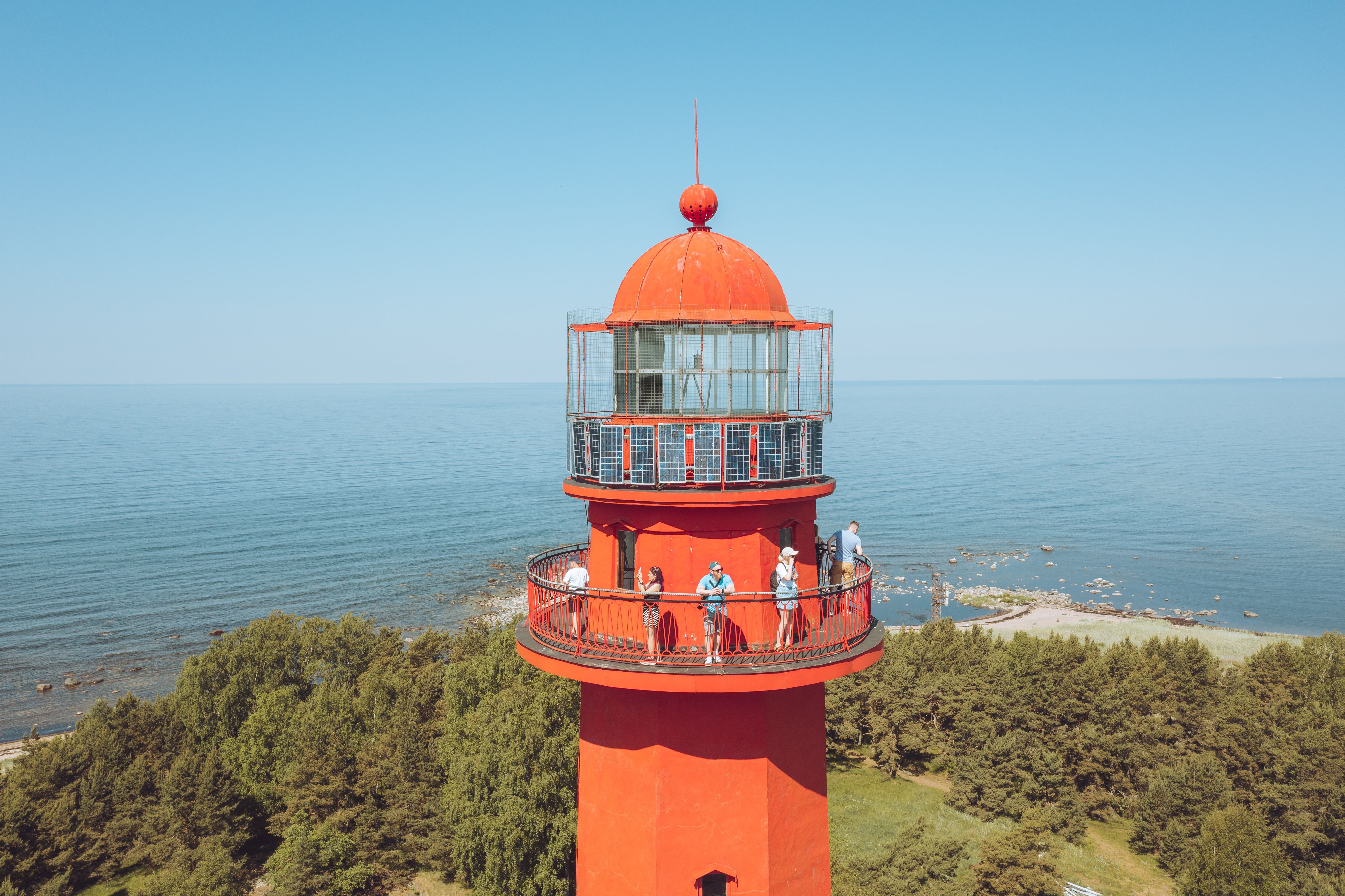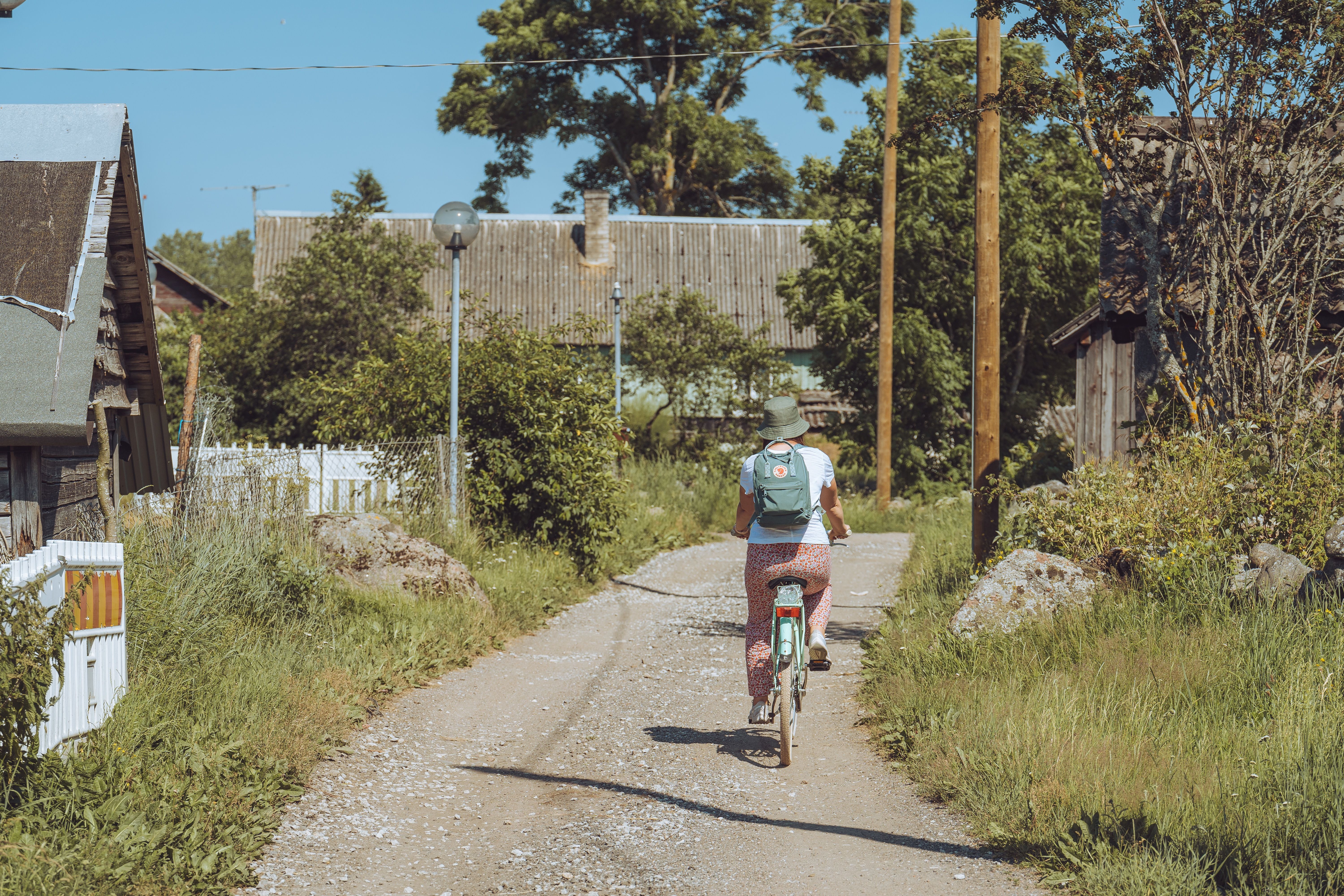
Island life near Tallinn: Aegna, Naissaar, and Prangli
12.02.2025
visittallinn.ee
There are three major islands easily accessible from the coastal capital of Tallinn: Aegna, Naissaar, and Prangli. The boat trip to each only takes between half an hour and an hour. There are regular departures during the summer season from Tallinn to Aegna and Naissaar, while a year-round service operates between Prangli and Leppneeme port in the Tallinn suburb of Viimsi.
The islands are great day trip destinations for people who love a peaceful, seaside atmosphere and nature. The islands offer hiking opportunities, both on your own or with a guide, and you can also explore the islands on a bike, on the back of a lorry, or, on Naissaar, even on a railway wagon. Overnight accommodation and dining options are available on all three islands.

Tallinn’s own island, Aegna
The administrative area of the city of Tallinn actually includes one island, Aegna, located just 14 kilometres from the city centre. This three-square-kilometre island, rich in flora, fauna, and boulders, is located in the Aegna Landscape Conservation Area.
Thanks to its beautiful forests, Aegna is a pleasant place for day trips and hikes, while the sandy beaches on its northern shore are perfect for sunbathing and swimming. A fascinating attraction is the magical stone labyrinth in Eerikneeme, on the northern part of the island, which was probably built sometime between the 12th to 15th centuries by the Estonian Swedes who lived there. Estonian Swedes are a Swedish-speaking minority who settled on Estonia’s northern and western coast and islands centuries ago.
The island has modern infrastructure including an information board, 24 nature trails with a comprehensive e-tourist map, tourism monitoring, and waste sorting.
When you arrive in Aegna, you can rent a bicycle for the day to ride around the island. It is also possible to book a guided walking tour, which will show you all Aegna’s main attractions and introduce you to island life.

How to get to Aegna?
Regular service to Aegna runs from May to September. The service is organised by the shipping company Spinnaker with the ship Vigtund, which leaves Tallinn from Linnahall quay at the Patarei Harbour. Travel time half an hour.
- Travel info: sunlines.ee, meretakso.ee, watersport.ee
- Information about the island and the services offered there can be found at www.tallinn.ee/aegna.
Fun fact: Estonian musical legend Jaak Joala sings about the charms of Aegna in his 1971 song ‘Suvemälestus’ (‘A Summer Memory’).
Musical Naissaar with a military past
Naissaar is located in the Gulf of Finland, 10 kilometres north of Tallinn. With an area of 19 square kilometres, it is the largest island in Northern Estonia and sixth largest in the country. Naissaar is located on an ancient shipping route, and its history is intertwined with maritime stories and traditions. The first records of a permanent settlement on the island are from the 15th century. This island is where the easternmost Estonian-Swedish community on the Baltic Sea emerged.
Over the past 300 years, Naissaar has been used for military purposes by various powers, forcing the permanent population to leave the island on several occasions. It was not until the early 1990s that Naissaar was finally liberated from the Soviet military. It’s hard not to notice the military heritage on Naissaar, where a mural of a Soviet sailor has even been featured in a BBC article.
A unique, narrow-gauge train runs between Männiku village and the harbour. There are 207 steps leading up to the observation platform of the northern tip lighthouse, and from a height of 45 metres, you can see the coast of Finland.
Today, Naissaar is a real summer island with beautiful, sandy beaches, hiking trails, military heritage, and the musical Nargen Festival in summer. On the eastern and southern coasts of the island, there are beaches with clean sand and wild roses. The island is covered by forest, where blueberries ripen in July and lingonberries in August and September. The whole island is under nature protection. There are three circular trails on Naissaar for hiking enthusiasts, which each conveniently start and end at the same points:
- The Central Trail(11 km), with several natural attractions: the Danish King’s Garden, the island’s highest point (Kunila Hill), Põhjaküla (the Northern Village), and the mines. The trail starts and ends at the Naissaar camping area and is marked with white-green-white signs.
- The Southern Trail(12 km) is known as the Cultural Trail, as it includes the Naissaar Church, cemetery, and chapel. The trail also passes the Sepa Farm, where the world-famous optician Bernhard Schmidt was born. The circular trail is marked with white-blue-white signs. The trail runs largely along roads and can also be traversed by bicycle. The trail starts and ends about 300 metres away from the former Naissaar visitor centre building.
- The Northern Trail(7 km) is also known as the Military Trail. The trail starts from the village of Haldja and runs north along the coast to the northern tip of Naissaar. All of the island’s main military attractions are located along the Northern Trail. The trail is marked with white-red-white signs.
Instead of a walking tour, you can also book a digital guided tour on a bicycle or on the back of a military car. With the help of the digital guide, you can choose a hiking trail with a difficulty and theme to suit you: military, history, or nature.

How to get to Naissaar?
Regular service to Naissaar runs from May to October. The service is organised by the company Monica on its 200-seat ship also named Monica, which departs from Tallinn to Naissaar from opposite the Pirita yacht club harbour. Travel time is 1 hour.
You can go to Naissaare with boats Nargö and Kalk as well. Boats depart from Quay A2 of the Seaplane Harbour of the Estonian Maritime Museum at Vesilennuki 6. The travel time of Nargö is 30 minutes and the boat takes 48 passengers on board. The travel time of Kalk is 1 hour and 15 minutes and it takes 32 passengers on board. More information: nicesaar.eu.
- Travel info: for all information about Naissaar, from excursions to cultural events and access to the island with different vessels, and also on tours of Aegna and Prangli, see monica.ee, sailing.ee, nicesaar.eu.
- You can find information about Naissaar’s attractions, hiking trails, and other practicalities at naissaar.ee.
Marina
- Naissaare harbour: 59° 33,4´ N 24° 33,2´ E
- Tel: +372 5345 0651
- More info: naissaar.ee
Did you know Bernard Schmidt, world-famous optician and inventor of the Schmidt telescope, which is used in the world’s largest observatories, was born on the island of Naissaar?
Unspoiled Prangli with a traditional settlement
Prangli Island has an area of 6.4 square kilometres. It is located on the northern coast of Estonia, almost 9 kilometres northeast of Tallinn suburb Viimsi.
Prangli is the only island in Northern Estonia that has been permanently inhabited for more than 600 years by Swedes, Finns, and Estonians. According to legend, Prangli was also a pirate stronghold. At last count, 171 people currently live in the island’s three villages.
Prangli has everything you need for life: its own primary school, cultural centre, library, museum, church, doctor’s office, post office, and a shop. There are sandy swimming beaches on both the northern and southern shores. Prangli gives an authentic look into the lives of Estonia’s islanders.
In addition to good accessibility and a pleasant living environment, Prangli’s trump card is its diverse nature: in the rocky, western part of the island, there are coastal meadows with salt-loving vegetation, while in the eastern and northeastern parts, there are sandy soils. Prangli is the only place in Estonia where the northern spleenwort fern can be found. A large part of the island is covered with pine forest, which alternates with blockfields and boulders. Nearly 40 species of waterfowl live on the island and, if you are lucky, seals can be seen in spring. The western part of the island is included in the Prangli Conservation Area while the northeastern corner is under the Prangli Landscape Conservation Area.
You can get around the island by foot and bike with the help of an audio guide. However, you will definitely experience more on an end-to-end organised day trip, which includes a guide service, transport to the island, a tour of the island on the back of a lorry, and island meals. Some of the island’s attractions, such as St. Lawrence’s Church, are also only accessible with a guide.

How to get to Prangli?
The ferry Wrangö from the company Sunlines sails from Leppneeme Harbour in Viimsi to Prangli every day from April to October (even several times a day on most days) and less frequently in winter. Travel time 1 hour.
- Travel info: www.sunlines.ee
Private tours to Prangli
Rides on small motorboats, RIB-type speedboats, or yachts can also be organised. If you want to take a sailboat to the island, it will take four hours from Tallinn if the wind is good, or at least six hours on a windless day.
- You can book maritime transportation at: www.pranglireisid.ee , watersport.ee, sailing.ee
Marina
- Port of Kelnase: "59°38'18"; N 25°00'48" E"
- Tel: +372 5191 9167
- More info: visitestonia.com
Did you know that the indigenous people of Prangli Island sometimes speak their own language?



